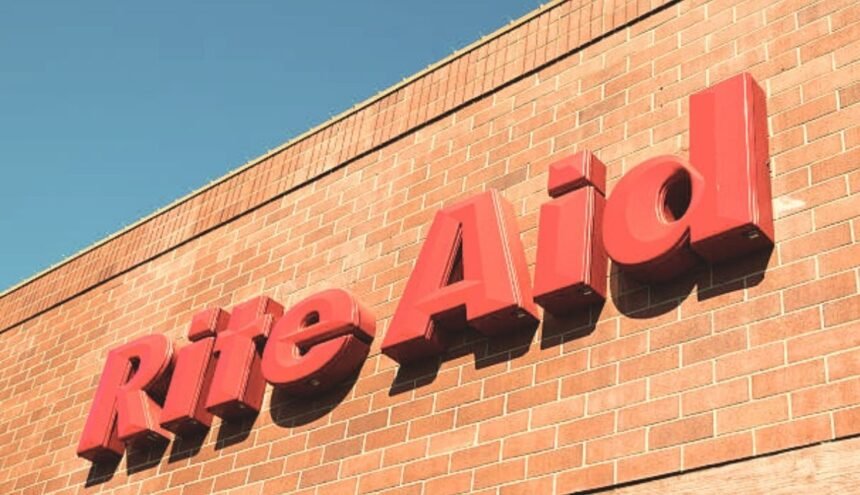NEWARK, N.J. – Rite Aid Corp, one of the largest drugstore chains in the United States, filed for Chapter 11 bankruptcy protection on Sunday, buckling under pressure from mounting legal costs related to the opioid crisis ravaging American communities.
The Camp Hill, Pennsylvania-based company, which operates more than 2,300 stores in 17 states, cited the “growing weight” of opioid lawsuits as a key factor in its decision to seek bankruptcy protection. Rite Aid said it expects day-to-day operations to continue uninterrupted while it restructures its finances under Chapter 11.
In its bankruptcy filing with the U.S. Bankruptcy Court in New Jersey, Rite Aid listed both assets and liabilities in the range of $1 billion to $10 billion. This includes up to $12.3 billion in legal liabilities, the bulk tied to thousands of state and local government lawsuits seeking damages for the company’s role in the deadly opioid epidemic.
“We have worked diligently over the past several years to reshape our business and organization to contend with a dramatically changing healthcare marketplace and challenging reimbursement rates,” Rite Aid CEO Heyward Donigan said in a statement.
“While we are making significant progress operationally and financially…we have still been unable to meaningfully reduce the overhang of our debt and legal liabilities.”
A Common Opioid Defendant
Rite Aid has been named as a defendant in more than 3,000 lawsuits nationwide related to its dispensing of prescription opioid medications such as oxycodone and hydrocodone. The company is accused of ignoring red flags about suspicious opioid orders and lax oversight that allowed massive quantities of the highly addictive painkillers to reach the black market.
Rite Aid is one of several major pharmacy chains, along with CVS, Walgreens and Walmart, that state and local governments have targeted for flooding their communities with opioids and profiting from human suffering. The bankruptcy filing comes just weeks before Rite Aid and other pharmacies were set to face trial in a landmark federal opioid lawsuit brought by communities in Ohio.
Alexandra Lahav, a professor at the University of Connecticut School of Law, said Rite Aid’s bankruptcy is likely a tactical move to gain leverage in settlement negotiations and avoid mounting legal fees.
“The bankruptcy stops the bleeding in the short term, but the creditors will still get paid,” Lahav said. “Filing for bankruptcy is the only way they have any hope of getting some kind of global peace that resolves all the litigation.”
A Trail of Opioid Devastation
The opioid crisis has taken a staggering human and financial toll on the United States over the past two decades. More than 500,000 people have died from overdoses involving prescription opioids and illegal drugs like heroin and illicit fentanyl since 1999, according to federal data. Countless more have struggled with opioid addiction and dependence.
The epidemic has placed immense strain on the healthcare system, child welfare agencies, first responders and communities now fighting to recover. The Society of Actuaries estimates the economic cost of the opioid crisis reached $1.5 trillion from 2015 to 2019, reflecting health care costs, criminal justice and child/family assistance expenses, and lost productivity.
State and local governments on the front lines of the epidemic began filing lawsuits against drug makers and distributors in the early 2010s, alleging deceptive marketing and lax controls that allowed prescription painkillers to proliferate.
Pharmacy chains have been pulled into the litigation more recently, accused of ignoring suspicious prescribing patterns and violating legal duties to monitor and report suspicious orders.
“We believe that Rite Aid pharmacies across the country helped create, fuel and prolong the opioid epidemic,” lawyers representing multiple California counties and cities said earlier this year after naming Rite Aid and others in a lawsuit.
Rite Aid Settles Some Cases
While adamantly denying any wrongdoing, Rite Aid has settled some of the pending cases against it. Earlier this year, Rite Aid agreed to pay up to $30 million to resolve a lawsuit by New York counties. Last year, the company settled with opioid-ravaged West Virginia counties for $30 million.
However, Rite Aid still faces legal exposure in thousands of cases that could total tens of billions in potential damages and legal fees. Earlier this month, several states announced a $3 billion settlement with Walgreens but left Rite Aid as a defendant.
In its bankruptcy filing, Rite Aid warned it may not have the financial resources to litigate or settle all claims against it. The company had reportedly been in discussions with lenders in recent months to rework debt and shore up finances.
But ultimately, the prospect of looming opioid verdicts forced Rite Aid’s hand. CEO Donigan said Sunday the company still hopes to emerge from bankruptcy in the near term with less debt and “once and for all address the uncertainty our company faces from potentially significant opioid litigation liabilities.”
Rite Aid traces its roots back to 1962 when it opened its first store in Scranton, Pennsylvania under the name Thrift D Discount Center. The company grew into one of the nation’s largest drugstore chains, peaking at over 5,000 locations in the early 2000s after acquiring rivals including Brooks Pharmacy and Thrifty PayLess.
But Rite Aid has struggled financially in recent years in a rapidly consolidating industry dominated by CVS and Walgreens. It operates just over 2,300 stores today after selling some locations to Walgreens. The company reported revenues of $23.7 billion in its latest fiscal year ended February 2022.
Rite Aid warned the bankruptcy process carries uncertainties, including the number of opioid lawsuits that will ultimately be filed. But the company expressed optimism about charting a viable path forward during this “critical time.”


